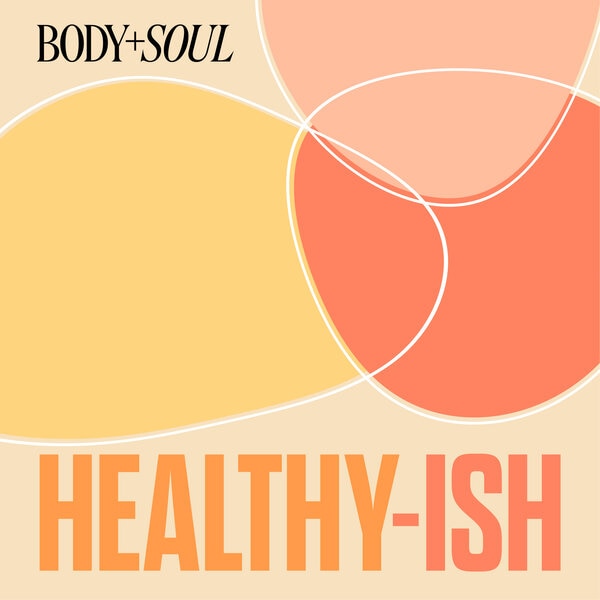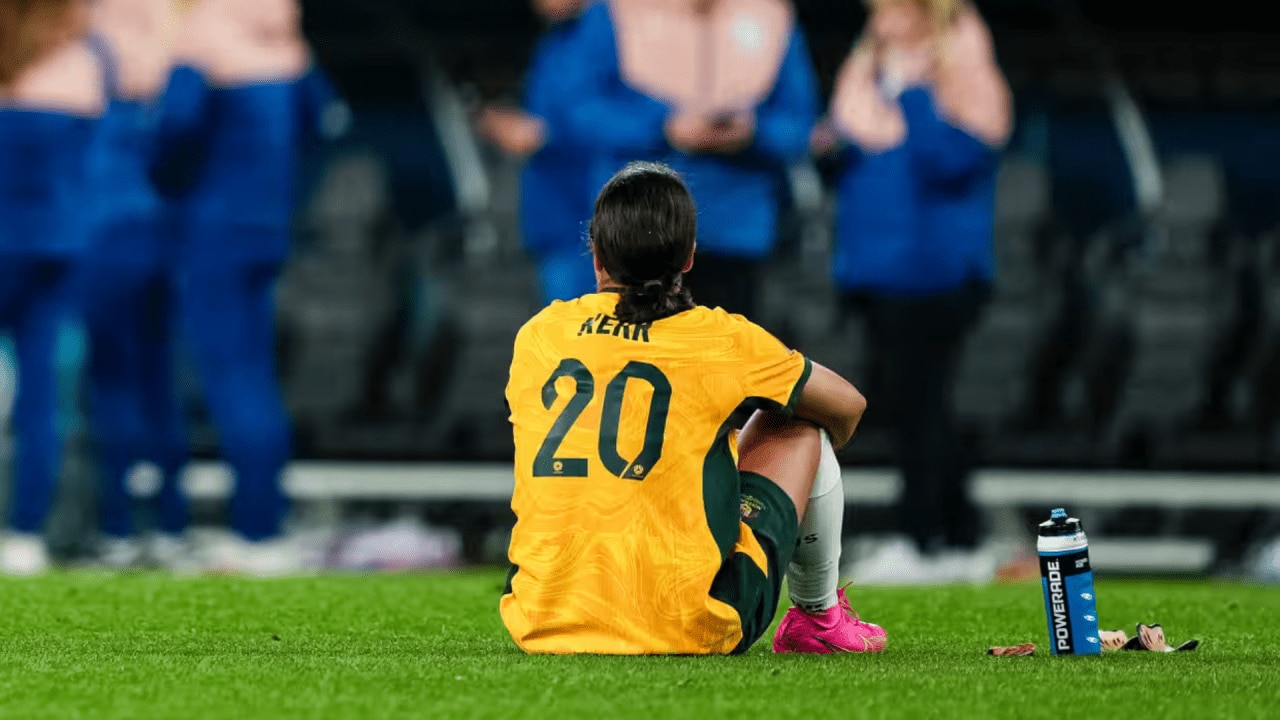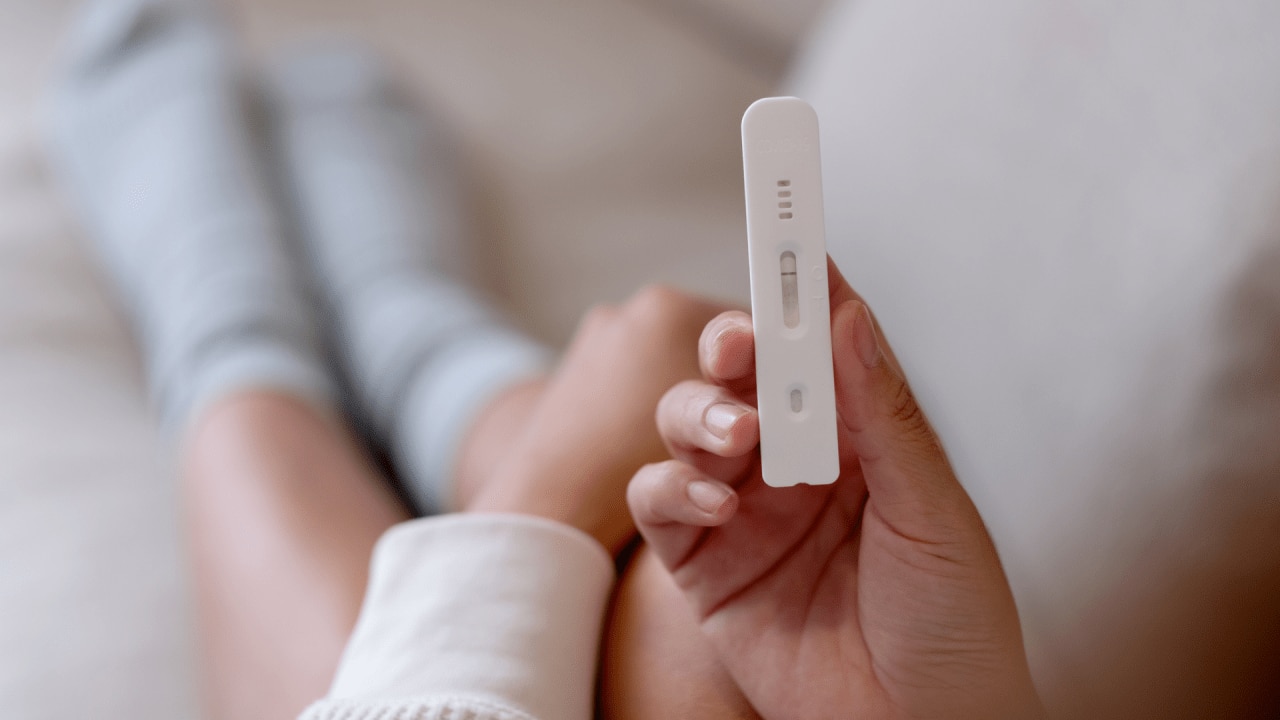Last week’s news that Sam Kerr will be on the sidelines for the foreseeable future came as a blow for football fans.
With the Paris Olympics, likely Kerr’s last, in just six months, and some shaky performances from the Matildas in their recent two-match friendly series against Canada, there’s no doubt the team needs their captain – and no doubt the skipper desperately wants to be there.
So why has the Ballon d’Or runner-up been relegated to the sidelines after an unfortunate anterior cruciate ligament (ACL) injury in a Chelsea team training camp? And why have four other players from Australia’s top team also suffered the same fate?
We asked PhD candidate Adam Walker from Bond University to weigh in on the overwhelming likelihood of ACL injuries amongst female athletes, particularly when it comes to the football field.
“The ACL is an important ligament that runs through the centre of the knee. It provides stability to the knee during sporting activities,” Walker tells Body+Soul.
“It is most injured during change of direction manoeuvres, or landing from a jump where the player plants their foot with the knee relatively straight and the knee moves inward putting excessive strain on the ACL causing it to fail.”
“Often, this occurs when the player is quickly reacting to an opposition or receives contact to the body that throws them off balance or direct contact to the knee,” says Walker.
Understandably, it’s a movement frequented by football players at the top of their game, which is, in part, why so many A-class players are currently facing the consequences.
During last year’s FIFA Women’s World Cup, held on home soil, 37 players were missing from the tournament, due to ACL tears. A revelation that saw England captain and long-time Arsenal player Leah Williamson call for urgent action after she ruptured her ACL during a match against Manchester United.
From the current Matildas squad alone, of which there are 23 listed players, five have been grounded due to ACL injuries in the last two years alone: Ellie Carpenter, Kyah Simon, Chloe Logarzo and Elise Kellond-Knight. It’s the second time Kerr’s suffered this injury too, after missing out on the 2012 Olympic Games in London thanks to the same diagnosis.
But it’s not a fate reserved for players in the international circuit. According to a report by Code Sports in November last year, five A-League Women’s players suffered ACL injuries in as many weeks towards the end of the 2023 season.
Former Matildas striker Amy Chapman, who tore her ACL twice before she turned 20, then a third time in 2013, agrees with Williamson, saying more investment is needed to reduce the risk of this injury amongst female football players – which is putting careers on hold, or ending them.
“ACL tears have always been common in female sports,” she said.
“The only reason we are hearing about it now is because participation is skyrocketing across all codes and the profiles of players are growing, as is the level of competition.
“The problem has grown with the growth of the game.”
Regardless of the code, or the level at which it’s played, female athletes are four times more likely to sustain an ACL injury than men, with men twice as likely to return to the sport.
They’re “astonishing figures” that PhD candidate Adam Walker, and his supervisor Dr Larissa Sattler, have taken a keen interest in, trying to explain why the incidences are so high among women, and what can be done to optimise ACL rehabilitation and develop prevention strategies.
“The high-risk to female athletes is a complex issue likely involving many factors that can be attributed to a combination of developmental, sociocultural, biological, physical and environmental,” Walker tells Body+Soul.
Developmentally, “the pathways and childhood play experiences play a crucial role,” he says. While long-standing gender roles encourage young boys to wrestle and play physical games with each other, girls have less exposure to the same activities. The consequences? “Neuromuscular development and proprioception that can be protective against injuries” amongst young men, and potentially impacted motor skills and joint stability in the girls.
Similarly, the age at which kids start playing sports, thus strengthening their joints, muscles and coordination, plays a role in injury prevention too.
Walker says “cross-coders” (individuals transitioning from one sport to another) may also face challenges with their ACLs, due to the need to adapt their “movement patterns” to avoid injuries.
“With a huge increase in female sports participation over the last few years,” younger players coming up through the sport may have stronger ACLs in future, but for the athletes currently in play, no dice.
From a biological standpoint, “differences in anatomy likely play a role,” says Walker.
He cites a wider pelvis in women “resulting in a greater angle from the hip to the knee” – a ‘Q-angle’ which can continue to “higher risk of ACL injuries as it affects the alignment and biomechanics of the knee joint.”
Categorical differences in “strength, power, and neuromuscular control [in women] compared to males,” may also contribute to the discrepancy, he says. “These variations can affect movement patterns and joint stability, influencing the risk of ACL injuries.”
Women are also at the mercy of their menstrual cycles, which could “influence ligament laxity, potentially making females more susceptible to ACL injuries during certain phases of their menstrual cycle,” says Walker, though he adds a lot more research is needed in this area.
Environmental factors, such as inappropriate footwear and playing surfaces also play a role in ACL injury risk, but not one that’s likely to affect professional players. However, at a grassroots level, female training grounds are often inferior to men’s, which will certainly contribute to higher instances of ACL injury down the track.
Just because the odds are stacked against women when it comes to dodging ACL injuries (not too abruptly, mind you), particularly those currently on the circuit, it’s not necessarily a career death sentence. After all, while 37 players weren’t involved in the World Cup, 736 were.
ACL tear prevention also comes down to training, specifically resistance training, which Walker says is a “key component of injury prevention.”
Players in high-level squads may have resistance training built into their programs, but Walker says that again, “societal perceptions and a lack of encouragement for girls to engage in resistance training may result in less development of muscular strength and stability, further contributing to the gender disparity in ACL injuries.”
However, “This is certainly changing,” says Walker, and as female players take up strength training, and girls start playing sport earlier, circumstances and injury rates will begin to reflect this.
“Addressing these multifaceted factors is crucial to reducing the gender disparity in ACL injuries,” he tells Body+Soul “Research suggests that when opportunities, experiences, and training ages are equalised between genders, the observed differences in ACL injury rates certainly decrease reducing the influence of biological factors in ACL injury.
For those currently in play, the best form of prevention is the widespread implementation of ACL injury prevention programs, which of course comes down to funding, thus interest.
“There are many programs that are well established across multiple sports, including the Perform+ by the Football Federation Australia and Prep to Play in Women’s AFL,” says Walker.
“These programs have been shown to reduce the risk of ACL injury by 50 per cent as well as a whole host of benefits to performance and the reduction of other injuries such as ankle and hamstring injuries.”
Not only could that work to improve players’ game, but save their careers.
There’s no doubt that “widespread implementation will involve the significant increase in funding to help support the training of coaches, parents, and administrators at the club level to deliver the programs across all age levels,” Walker continues.
“Further funding into research investigating ACL injury, including a national ACL registrar and support for the development and training of female athletes should also be a priority,”
Up until even last year, the thought of garnering that level of support for female sportspeople felt like a pipedream. But the Women’s World Cup did mark a changing of the tides – for the Matildas, their competitors, and other women’s teams who demanded reciprocal attention, particular when compared with their men’s counterparts.
At this point in time, we’re at a turning point for women’s sports, where there’s an opportunity to stand behind them and support in a way that’s meaningful, and creates long-lasting change.
Part of that requires ensuring our athletes, like Sam Kerr and the five Matildas who have been taken down by ACL tears, have the chance to play at all.






